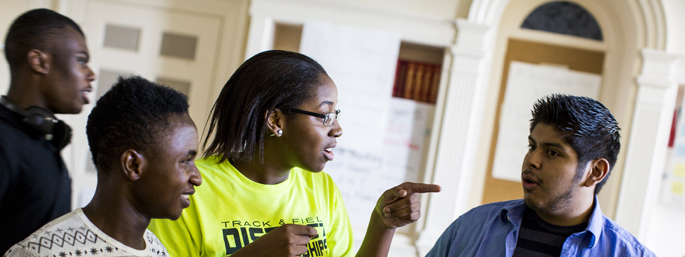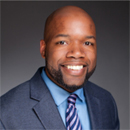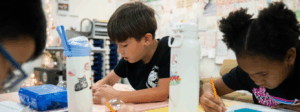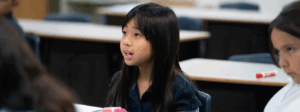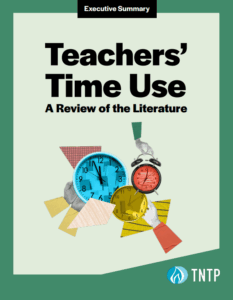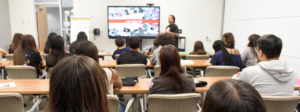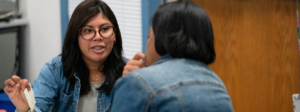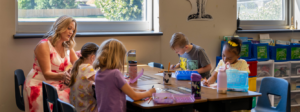Here’s a tough—and sometimes uncomfortable—question: What happens when students and teachers struggle to bridge cultural gaps that exist between them, and their relationships suffer as a result? What can we do about it?
It’s more important than ever that we talk about these issues, because such differences are on the rise. A recent Center for American Progress report found teachers of color make up just 18 percent of public school teachers, while students of color are nearly 50 percent of the children they educate. Student populations diversify at faster rates than teaching staff, so those gaps are widening, not shrinking.
More diverse classrooms are something to celebrate. But cultural differences that come along with them can affect teachers’ and students’ interactions.
They can also make already fraught topics even harder to talk about in the classroom. In recent months, with the events that have unfolded in Ferguson, Staten Island, Cleveland and elsewhere, many teachers have been grasping for ways to talk with their students about racism, inequality, and other complicated, sensitive issues. We recently shared several resources that can help teachers guide conversations around these tough topics, even across racial and cultural differences. But schools must still do more to support teachers to talk about differences (and the different life experiences they bring with them), and help teachers effectively navigate them in order to build strong relationships with students and families.
Like most educators, I’ve seen these challenges firsthand. Before TNTP, I worked in an urban school where I dealt with the majority of the discipline issues. I found myself in the middle of a lot of conflicts between students and teachers. Usually, these conflicts began as a simple misunderstanding—often stemming from cultural differences. Here’s an example:
One day, two students (both African-American) were marched into my office by security with disciplinary referrals for “disrespecting staff” and “interrupting class.” A disagreement about a problem posed in class had turned into an active discussion (focused on the content of the lesson) between the two students. The teacher gave a directive to stop, using a tone the students characterized as “quiet.” One student had responded by asking, “Why? We’re just talking about the lesson.” When asked why they didn’t quiet down, both students explained that they didn’t think the teacher was “serious.”
These students expected their teacher to “say it like he meant it”— anything less was interpreted as a suggestion rather than a direct order. This expectation was rooted in their cultural norm: Directives blanketed in emotion are a mainstay of the culture in which these students were raised; in my experience, they are common across subgroups of the African Diaspora. Likewise, expressively and boisterously defending one’s position is a valued trait within the African-American community. The adults in my family, for instance, have dynamic discussions about everything from politics to paint swatches. And while overt defiance has no place in school, teachers from dissimilar cultural backgrounds may interpret questioning authority and lively verbal exchanges as defiance even when they are not intended to be.
These kinds of simple misunderstandings can lead to harmful outcomes for students. When educators lack the training to bridge these “culture gaps,” they can unknowingly punish students for honoring practices they’ve learned at home. Indeed, research shows that African-American students are punished disproportionately compared to their peers.
So what can we do about this? As the demographic gaps between teachers and students grow wider, the need for a change in training around cultural diversity is increasingly important. The go-to strategy for schools and districts tends to be high-level celebrations of diversity, like assemblies to honor Black History Month or “world cultures.” But I believe everyone would be better served by practical trainings that support teachers to become more culturally literate with the particular student populations they serve.
This level of training isn’t just for white teachers of African-American students, of course, but wherever there are lines of difference. At my former school, for example, we had a sizeable population of students belonging to the Karen (kuh-rĕn) group from Thailand and Burma. Cultural misunderstandings—such as teachers addressing students by only one of the three parts of a traditional Karen name—caused students to feel disrespected.
In response, our school leaders catered diversity training to educate staff about Karen cultural customs. Teachers attended Karen celebrations at the local community center and invited Karen guests into the school. This approach empowered teachers to be more confident in their interactions with their students and families, and ensured that students didn’t feel culturally alienated in school.
If our public schools are to truly serve students well and make our teachers feel supported to engage students and families successfully, diversity efforts must be focused on the needs of individual school communities. We must educate ourselves about communication norms in the communities we serve, and increase our efforts to authentically engage with these communities as best we can (including, sometimes, having tough conversations about the experiences our students face in their daily lives, even if we don’t share those experiences). We cannot hope that as our schools become more diverse, they’ll become “colorblind” places where cultural differences won’t matter. Ultimately, that approach only devalues students’ cultures, rather than honoring them.
